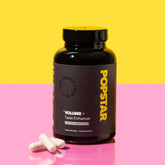Dry orgasms, sometimes referred to as “anejaculation” or a form of ejaculatory dysfunction, occur when a man reaches sexual climax but expels little to no semen. While this phenomenon may cause concern for those experiencing it, dry orgasms can be influenced by a variety of factors, from psychological to physiological. In this article, we’ll take a deep dive into the topic, exploring its causes, how it differs from retrograde ejaculation, and the treatment options available for those who experience this unique form of orgasm.
Table of Contents
- What Is a Dry Orgasm?
- How Does Dry Orgasm Occur?
- Common Causes of Dry Orgasm
- Symptoms and Signs
- Diagnosis and Consultation
- Is Dry Orgasm the Same as Retrograde Ejaculation?
- What Are the Potential Complications?
- Treatment and Management
- FAQs About Dry Orgasm
- References
What Is a Dry Orgasm?
A dry orgasm is a type of sexual climax in which a man experiences the pleasurable sensations of orgasm but does not release any (or only a negligible amount of) semen. At first glance, the term “dry orgasm” can be confusing or alarming for individuals who typically associate orgasm with ejaculation. However, the process of orgasm—an intense sensation of pleasure that marks the peak of sexual arousal—can still occur even when little to no seminal fluid is expelled.
Dry orgasms can be normal in certain circumstances, such as after prostate surgery or as a result of hormonal changes. Sometimes, they can be caused by psychological stress or underlying chronic health issues. Distinguishing between typical ejaculatory dysfunction, dry orgasm, and retrograde ejaculation requires medical guidance, as each condition has unique triggers and potential treatments.
The phenomenon of dry orgasms can be temporary or permanent, depending on the root cause. While many men may feel concerned upon first experiencing a dry orgasm, proper diagnosis and consultation with a healthcare provider can help identify underlying causes and guide potential treatment.
How Does Dry Orgasm Occur?
To understand dry orgasms, it helps to take a brief look at the physiology of male ejaculation. During sexual arousal, the body readies itself for orgasm by producing seminal fluid in the seminal vesicles and prostate. When climax approaches, this fluid normally travels through the urethra and out of the penis. For a true dry orgasm, however, the normal progression of ejaculate either does not occur or is redirected.
In some cases, there is simply inadequate seminal fluid production. In others, the semen is redirected into the bladder instead of exiting via the urethra, which is typically described as retrograde ejaculation. A genuine dry orgasm, however, involves no semen traveling to the bladder during climax itself, often due to physically reduced or absent semen production or blockages in the reproductive tract.
There are also scenarios in which the nerves or muscles involved in ejaculation become disrupted, resulting in a normal feeling of climax but little or no semen being released. This can sometimes be one aspect of orgasmic dysfunction, reflecting an interplay between the nervous system and reproductive organs.
Ultimately, understanding the role of each component—seminal fluid production, nerve impulses, pelvic floor muscle contractions, and other bodily processes—can clarify the reason a person experiences a dry orgasm.
Common Causes of Dry Orgasm
Because ejaculation and orgasm are complex processes, disruptions can happen in a wide variety of ways. Below is a list of potential causes that can contribute to a dry orgasm:
- Medications: Certain prescription medications (especially those for high blood pressure, antidepressants, and muscle relaxants) may decrease semen production or alter the nerve responses necessary for ejaculation.
- Prostate Surgery or Procedures: Surgical interventions involving the prostate gland, such as the removal of the prostate (prostatectomy), nerve-sparing techniques, or transurethral resection of the prostate (TURP) can affect the ability to produce or expel semen.
- Nerve Damage: Conditions that cause nerve damage—such as diabetes, spinal cord injuries, or multiple sclerosis—may impede the signals that trigger ejaculatory response, resulting in a dry orgasm.
- Hormone Imbalances: Testosterone levels that are too low or disruptions in other hormones affecting the reproductive system may decrease the quantity of ejaculated fluid.
- Obstruction in the Reproductive Tract: Blockages in the seminal vesicles or vas deferens can prevent semen from being expelled during orgasm.
- Certain Neurological Disorders: Disorders affecting the nerves that regulate ejaculation (e.g., stroke, spinal disorder) can result in incomplete or absent ejaculation.
- Primary Ejaculatory Dysfunction: This occurs when a man has never produced ejaculate due to congenital abnormalities or a severely low volume of seminal fluid production.
Symptoms and Signs
Although the main sign of a dry orgasm is the absence of semen during climax, there are other supportive indicators:
- A sensation of orgasmic release without visible ejaculate.
- Normal or slightly reduced pleasure levels, depending on the underlying cause.
- Possible changes in the consistency or quantity of semen if partial release is present.
- In some cases, bladder discomfort after orgasm, particularly if semen is rerouted internally (as in retrograde ejaculation).
- Psychological stress or anxiety when noticing the absence of ejaculate for the first time.
Not all men experience distress with a dry orgasm, especially if they maintain the pleasurable sensations of climax. However, if you are trying to conceive or feel concerned about changes in your sexual health, it is important to consult a healthcare professional for guidance.
Diagnosis and Consultation
Diagnosing the cause of a dry orgasm can be instrumental in alleviating concerns and ensuring proper treatment. A healthcare provider, such as a urologist, may use some or all of the following methods to identify the cause:
- Medical History Assessment: Your healthcare provider will take a thorough history, including the nature of your dry orgasms, medication use, and any past surgeries, to identify contributing factors.
- Physical Examination: A physical exam may be performed to detect structural abnormalities or issues in the penis, testicles, or prostate area.
- Urinalysis: A post-ejaculatory urinalysis can determine whether semen is present in the urine, which may suggest retrograde ejaculation.
- Hormonal Tests: Blood tests can assess levels of testosterone, follicle-stimulating hormone (FSH), and luteinizing hormone (LH).
- Imaging Studies: In cases where structural abnormalities or obstructions are suspected, ultrasound or MRI imaging can be used to inspect the reproductive organs internally.
Identifying the root cause of a dry orgasm makes it possible to determine how permanent or treatable the situation is. Sometimes, simple medication adjustments can restore normal ejaculatory function, while in other cases a more holistic approach—addressing hormonal levels, nerve function, or structural issues—may be needed.
Is Dry Orgasm the Same as Retrograde Ejaculation?
Dry orgasm is not always synonymous with retrograde ejaculation, although they can appear similarly when no semen is visible during climax. In retrograde ejaculation, semen travels backward into the bladder rather than out of the urethra, frequently resulting in cloudy urine after orgasm. By contrast, a dry orgasm can reflect an overall reduction in fluid production or other mechanical reasons inhibiting semen from being created or released at all.
Retrograde ejaculation is often associated with:
- Men who have had procedures that affect the bladder neck or prostate.
- Use of medications such as certain alpha blockers.
- Nerve damage as observed in diabetes or spinal cord disorders.
In essence, all complete retrograde ejaculatory events will appear as dry orgasms, but not all dry orgasms necessarily stem from semen traveling backward. Proper testing, such as analyzing the urine right after orgasm, can help differentiate between these two conditions.
What Are the Potential Complications?
Men who experience dry orgasms may wonder about the broader implications for sexual health and overall well-being. Some potential complications include:
- Fertility Concerns: If you are actively trying to conceive, having a dry orgasm can present a challenge because there is little or no semen to fertilize a partner’s egg. In such instances, assisted reproductive technologies may be considered.
- Psychological Impact: Sexual satisfaction and self-esteem can be affected when men notice a change in ejaculatory status. Feelings of inadequacy, frustration, or stress may develop if dry orgasms persist.
- Underlying Health Conditions: Dry orgasms can be a symptom of an undiagnosed or poorly managed condition, such as hormonal imbalances or neurological disorders, which benefit from timely evaluation.
- Potential Urinary Incontinence: In cases of retrograde ejaculation, the introduction of fluid into the bladder can sometimes worsen other urinary tract issues in susceptible individuals.
While some men may adapt to the change without serious distress—particularly if the orgasms remain pleasurable—others might find that fertility challenges and emotional concerns call for medical intervention.
Treatment and Management
Treatment and management of dry orgasms often depend on the specific cause, making individualized diagnosis essential. Below are some possible approaches:
1. Medication Adjustments
When dry orgasm is related to prescription medication use, a healthcare provider may adjust dosages or switch to alternative drugs that pose fewer side effects on ejaculatory function. Consulting a healthcare provider before making any changes is critical to avoid unintended consequences.
2. Hormone Therapy
Men with significantly low testosterone or other hormonal imbalances may benefit from hormone replacement therapy. Correcting hormone levels can sometimes restore partial or full ejaculatory function.
3. Addressing Underlying Health Conditions
Sometimes, the resolution of a dry orgasm involves managing an underlying condition, such as diabetes or neurological disorders. Maintaining optimal blood sugar levels, improving nerve health, or using specialized treatments for spinal issues might reduce ejaculatory dysfunction symptoms.
4. Surgical Interventions
In cases of anatomical obstructions or complications from previous surgeries (e.g., scar tissue formation after a procedure), more invasive interventions can be discussed with a specialist. Procedures might involve removing blockages in the vas deferens or reconstructing certain pathways within the reproductive system.
5. Psychological Support and Therapy
Because sexual function is intimately connected to psychological well-being, therapy or counseling may help men grappling with emotional distress concerning their dry orgasms. Performance anxiety, stress, or relationship difficulties can all influence sexual satisfaction.
6. Assisted Reproductive Techniques
For men whose primary concern is fertility, advanced reproductive methods may assist in conceiving. Options like artificial insemination and in-vitro fertilization can help retrieve semen from testicular tissue or the bladder, if present, and facilitate pregnancy with a partner.
Ultimately, the correct treatment strategy depends on the root cause of the dry orgasm and the individual’s goals, such as improved sexual satisfaction or increased fertility. Collaborating with a healthcare professional is the best way to chart a course forward.
FAQs About Dry Orgasm
Are dry orgasms normal?
Dry orgasms can occur for a variety of reasons, and sometimes they are completely normal—especially after certain surgeries like prostate removal or treatment for other pelvic conditions. However, if you experience them unexpectedly and they persist, a medical evaluation might help identify any underlying concerns.
Does a dry orgasm affect libido?
A dry orgasm does not necessarily diminish libido or sexual desire. Libido is primarily governed by hormonal balance, psychological factors, and general health. While the absence of ejaculate can be surprising, many men maintain a healthy sex drive, even if their orgasm doesn’t result in ejaculation.
How does a dry orgasm impact fertility?
Fertility can be affected if there is no or minimal semen containing viable sperm. When men are trying to father a child, having a dry orgasm can make natural conception more challenging. In these scenarios, your healthcare provider may recommend fertility testing or advanced reproductive techniques, such as retrieving sperm directly from the testicles or bladder and using assisted reproductive technologies.
Can dry orgasm cause pain?
Most men do not experience pain during a dry orgasm. However, if the underlying cause of the dry orgasm involves a blocked duct or residue in the prostate, there may be some discomfort or aching. In the case of retrograde ejaculation, some men report mild discomfort in the bladder area following orgasm, but a true dry orgasm without retrograde flow is less commonly associated with pain.
Can stress or anxiety cause dry orgasm?
Yes, psychological factors such as stress or anxiety can contribute to any number of sexual dysfunctions, including difficulties with ejaculation. High stress levels may affect hormone production and disrupt the normal cycle of arousal and orgasm, resulting in less or no ejaculate. In such cases, adopting stress-management techniques or pursuing therapy may help.
Is it possible to regain ejaculatory function after a dry orgasm phase?
In many cases, yes. If the underlying cause is temporary—such as side effects from medications or stress—normal ejaculatory function may resume once those factors are managed. Even for individuals who have undergone permanent structural changes, there may be options to restore some or all ejaculatory function through surgery, medication, or other interventions.
Could lifestyle changes improve dry orgasm?
Lifestyle factors play a significant role in sexual health. Maintaining a balanced diet, regular exercise routine, and adequate sleep can support overall health and potentially boost hormonal balance. Reducing alcohol intake, quitting smoking, and managing chronic conditions like diabetes can also enhance nerve function and may minimize the severity of ejaculatory dysfunction, ultimately improving orgasmic consistency.
Can Kegel exercises help with dry orgasm?
Kegel exercises, which strengthen the pelvic floor muscles, are known to improve urinary continence and support the muscles involved in orgasm and ejaculation. However, if the lack of fluid is specifically due to low semen production, obstructions, or nerve injuries, Kegels alone may not fully restore ejaculatory output. Nevertheless, they might help improve the quality of orgasms and overall pelvic health.
Does age influence the likelihood of a dry orgasm?
As men age, prostate health, hormone levels, and reproductive function naturally evolve. Most men experience changes in ejaculate volume as they get older. However, a complete absence of ejaculate (i.e., a dry orgasm) usually indicates more than just age-related decline. Thus, if dryness persists, an evaluation can help rule out or confirm specific age-related issues.
What questions should I ask my healthcare provider about dry orgasms?
- What tests do I need to determine the cause of my dry orgasms?
- Could my current medications be contributing to my lack of ejaculate?
- Are there any reversible factors (like stress or hormone imbalances) that might restore my ejaculatory function?
- How might dry orgasms affect my chances of fathering a child?
- Are there any medical or surgical treatments that could help produce or restore normal ejaculation?
- Should I consider talking to a mental health professional if I feel anxious or distressed about my condition?
References
- National Library of Medicine. Retrograde Ejaculation.
https://medlineplus.gov/ency/article/001285.htm - Mayo Clinic. Ejaculation Problems.
https://www.mayoclinic.org/diseases-conditions/ejaculation-problems/symptoms-causes/syc-20353194 - Cleveland Clinic. Retrograde Ejaculation.
https://my.clevelandclinic.org/health/diseases/15826-retrograde-ejaculation - Healthline. Low Semen Volume.
https://www.healthline.com/health/low-semen-volume - European Urology. Ejaculatory Dysfunction and Its Treatment. (2013).
https://www.eu-acme.org/documents/SexMed/EjaculatoryDysfunction/ejac_dysfunction.pdf































